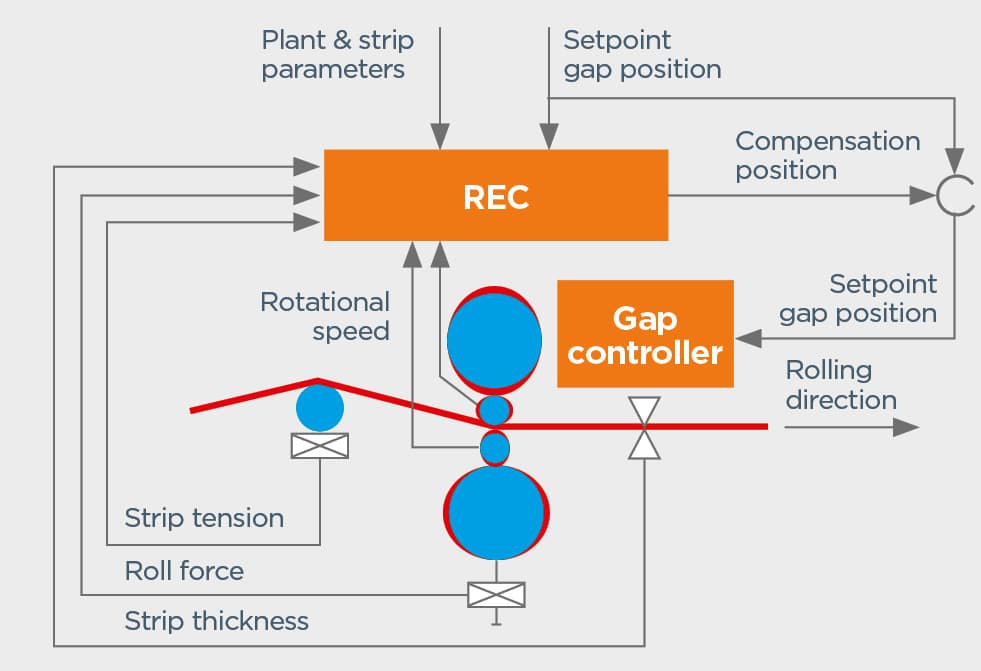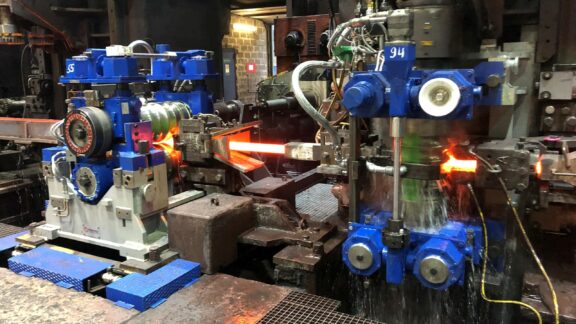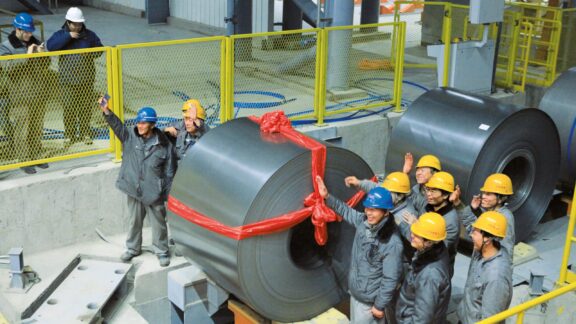Rolls in rolling mills are never perfectly round but have a certain eccentricity, which has a range of different causes, such as:
- Inaccuracies in grinding
- Non-uniform thermal expansion
- Asymmetrical adjustment of bearing rolls shell via drive-spindle head
When the roll is rotating, the eccentricity moves at a base frequency, which is the rotary frequency of the roll and a number of harmonic frequencies. Every roll of each roll stack can have eccentricities that result in thickness and tension errors. These errors then lead to disturbances in neighboring stands. The result is a mixture of many cyclic disturbances in the exit thickness that in most plants add up to a significant percentage of the total thickness deviation.
Compensating roll eccentricity is no small feat—due to the large number of different eccentricity frequencies and difficulties in obtaining the right measurement signals and filtering them.
Roll-Eccentricity Compensation (REC) from Primetals Technologies rises to these challenges. It is a fully digital model-based control that models the shape of the eccentricity during rolling. As input, depending on availability, it uses a combination of data on the exit thickness, entry strip tension, and roll force to extract any eccentricities. The output is translated into a compensation set point for the gap control (pre-control), adjusting the gap in a way that effectively eliminates the influence of the eccentricity on strip thickness or tension.
As a result, the plant owner can expect higher strip quality, fewer roll changes and thus fast ROI.



